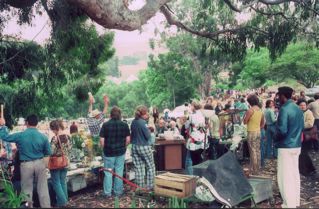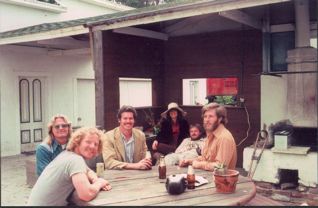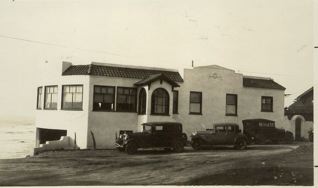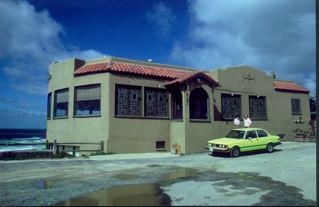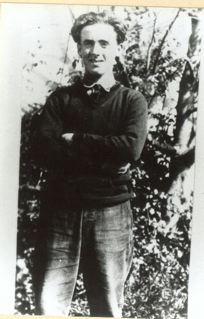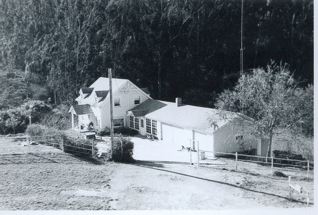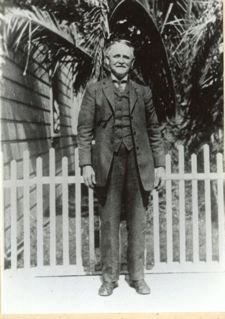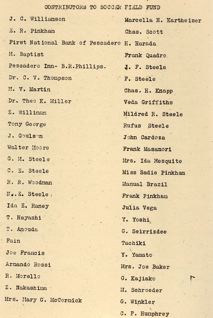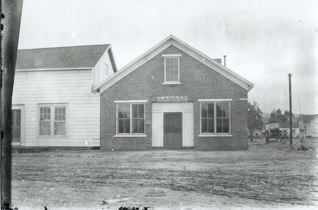 Photo: Ralph Feusier’s Uncle Horace Nelson headed up the Bank of Half Moon Bay, the building at right.
Photo: Ralph Feusier’s Uncle Horace Nelson headed up the Bank of Half Moon Bay, the building at right.
When Ralph Feusier visited the Coastside in 1993, he was a retired insurance executive emeritus residing in Massachusetts.
âI came to Half Moon Bay to find the Nelson house,â? he told me. âI was terribly disappointed when I didnât see it.â? He never dreamed that the Victorian would be hard to find but he couldnât recognize the house where he had spent happy summers as a child.
âThe Nelsonâs Victorian stood on two acres and there was a chicken house,â? Ralph said. âWe used to throw rotten eggs at the barn. Aunt Flo was wonderful, very intelligent. She wore long dresses and black pince-nez glasses.â?
As a little boy, Ralph looked up with wonder as Uncle Horace trimmed his magnificent walrus mustache. By then Horace was retired and enjoyed growing artichokes and tending to his prize-winning dahlias. âPeople came from all over to photograph the flowers,â? Ralph remembered.
{Note: I sent him to Katherine Valentine, daughter of Judge John Pitcher, and she not only helped Ralph find the houseâshe knew his relatives].
First time around Ralph didnât find the house but his memories of Half Moon Bay remained fresh– like the walk from the Victorian house to the beach, the street lined with eucalyptus trees on both sides.
âI could walk from the Nelson house to the grammar school, a two-story wooden building with a tower,â? Ralph said. He still visualized Carrie, the Nelsonâs housekeeper and the beautiful handmade dish- towels that were sold at the townâs historic Methodist Church a few steps away.
Ralph Feusierâs link to the Nelson family was through his descendents, the Josiah Lockes. Josiah Locke was the superintendent of the big Golden Gate Four Mill in San Francisco and the father of three children, Flo, Emily and Horace.
During the Gold Rush, Josiahâs famous brother, David, devised a novel way of carrying water in carts to thirsty San Franciscoâlater he built a pipeline that delivered water to the ships tied up in the harbor.
The Josiah Lockes were early Coastside commuters, maintaining two homes, one on Grove Street in San Francisco and the other in the remote Purissima Canyon, south of Half Moon Bay. Great Aunt Flo was born there in 1860.
â¦To Be Continuedâ¦.


